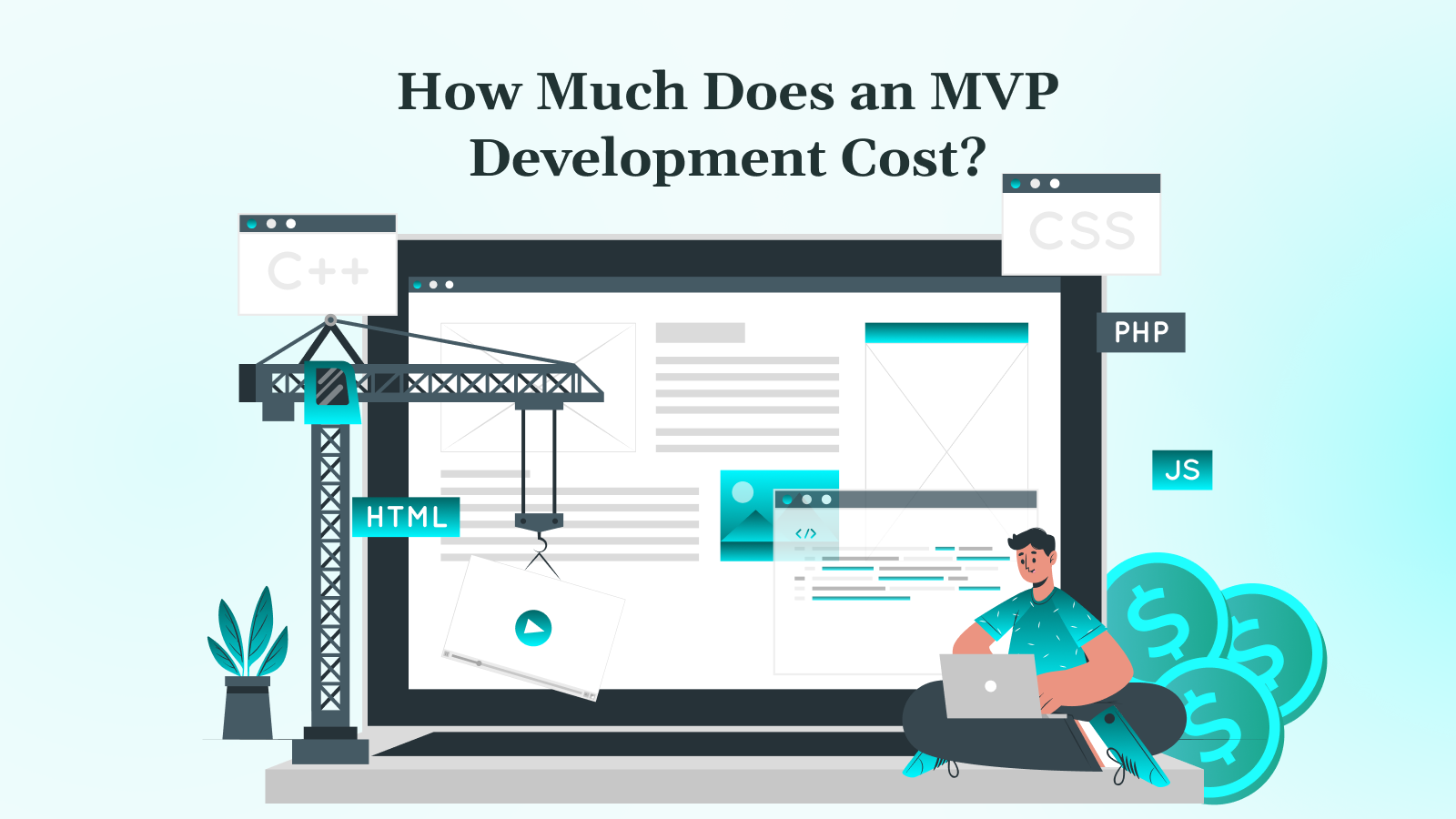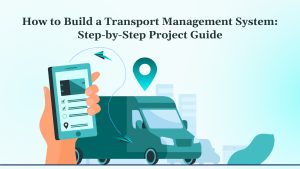Product decision-makers shape the success of every digital product. These include CTOs, product managers, founders, and innovation leads. They are responsible for approving budgets, allocating resources, and setting clear product goals. Whether working in a startup or a growing business, they face similar challenges.
They must choose which ideas to build, when to launch, and how to manage the associated risks. For this group, understanding the MVP development cost is essential. It helps them plan better, avoid overspending, and test ideas early.
This guide covers every factor that affects the cost of an MVP. It offers practical steps for budgeting, hiring, and development planning. The goal is to help product decision-makers make smart investments and launch faster with confidence.
Key Takeaways
- MVP development costs vary widely, typically ranging from $10,000 to $150,000+ based on features, design, and tech choices.
- Early budgeting and clear scope definition are critical to avoid overspending and delays.
- Key cost factors include feature complexity, integrations, team size, and geographic location.
- Post-launch expenses like hosting, maintenance, and security updates should be planned for.
Understanding MVP and Its Importance
Resource-constrained startups should not just build quickly; they need to build the right thing. That is why understanding the purpose of an MVP matters more than just knowing the cost.
Defining an MVP
An MVP is the simplest and smallest version of a product that offers enough value to early users. It allows businesses to test assumptions, validate user interest, and collect feedback for future enhancement.
Characteristics of an MVP
- Focused functionalities that solve a specific core problem
- Fast build-time and minimal development resources
- Designed for testing rather than scaling
- Early feedback loop that reduces development waste
Benefits of Building an MVP
- Speeds up product validation
- Reduces time-to-market
- Requires lower upfront investment
- Helps secure investment by showing user interaction
By launching an MVP, startups mitigate risk by learning exactly what customers want before scaling up their operations.
Now that we have covered its importance, let us explore why budgeting for it matters.
Why Plan an MVP Development Budget?
A budget is your product’s financial blueprint. Without one, even the simplest MVP can experience spiraling costs or missed deadlines.
Planning your MVP budget helps you:
- Define the total investment required
- Set clear boundaries for feature prioritization
- Allocate resources to the most critical components
- Avoid common traps like scope creep and rushed fixes
- Communicate transparently with investors or co-founders
Early budget discussions are also essential when approaching agencies or development partners like DEVtrust.
Budgeting well positions your entire project for success. Up next: factors that influence how much you will actually spend.
Factors Affecting MVP Development Costs
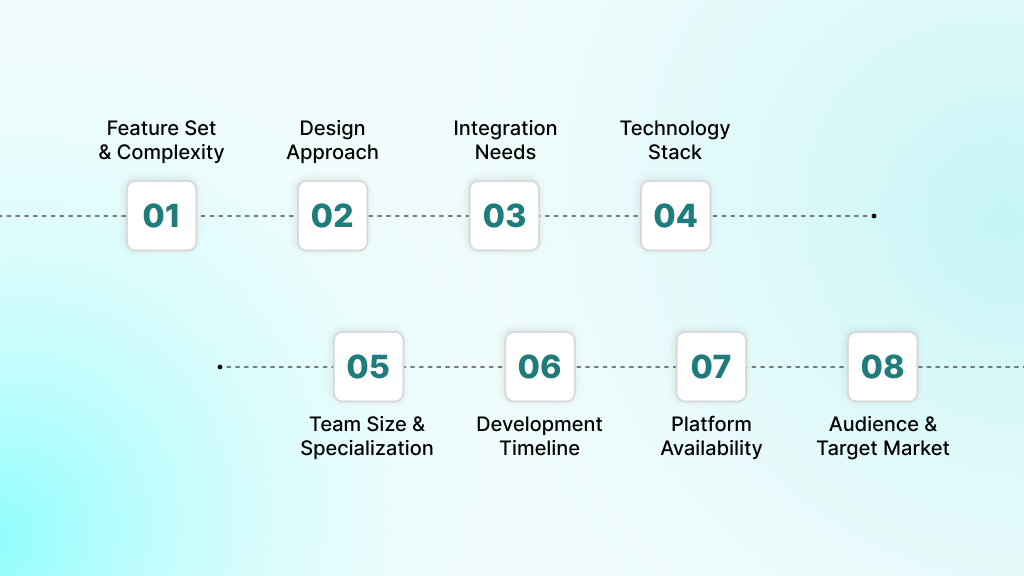
Estimating the true cost of an MVP starts with identifying the core factors that shape your overall budget. Here is a breakdown of the key factors:
Feature Set and Complexity
The number and sophistication of features directly affect build time and costs. A simple MVP with just a login, dashboard, and core functionality will be significantly more affordable than a feature-rich product.
Design Approach
Template-based layouts are quicker and more affordable to produce. In contrast, fully custom UI/UX design requires greater investment in both time and resources.
Integration Needs
Using third-party tools like Stripe for payments, Twilio for SMS, or Firebase for authentication can streamline development. However, integrating them still adds time and complexity.
Technology Stack
The chosen stack (such as React, Node.js, or Django) and the complexity of API interactions directly influence development time and cost.
Team Size and Specialization
Involving UI designers, backend engineers, QA testers, and cloud architects improves quality but also raises your development budget.
Development Timeline
Shorter timelines can require a larger development team or more intensive sprints, increasing total spend.
Platform: Web, Mobile, or Both
Developing for multiple platforms at once increases both scope and cost compared to building for a single platform.
Audience and Target Market
MVPs targeting businesses (B2B) often require advanced features, role-based access, and enterprise integrations. These typically cost more than consumer-facing (B2C) MVPs, which may prioritize speed and ease of use.
Properly understanding these factors leads to more accurate estimates and better budget control. It is also important to account for early-stage costs like product discovery, user research, and prototyping before development begins.
Essential Pre-Development Steps for MVP Budgeting
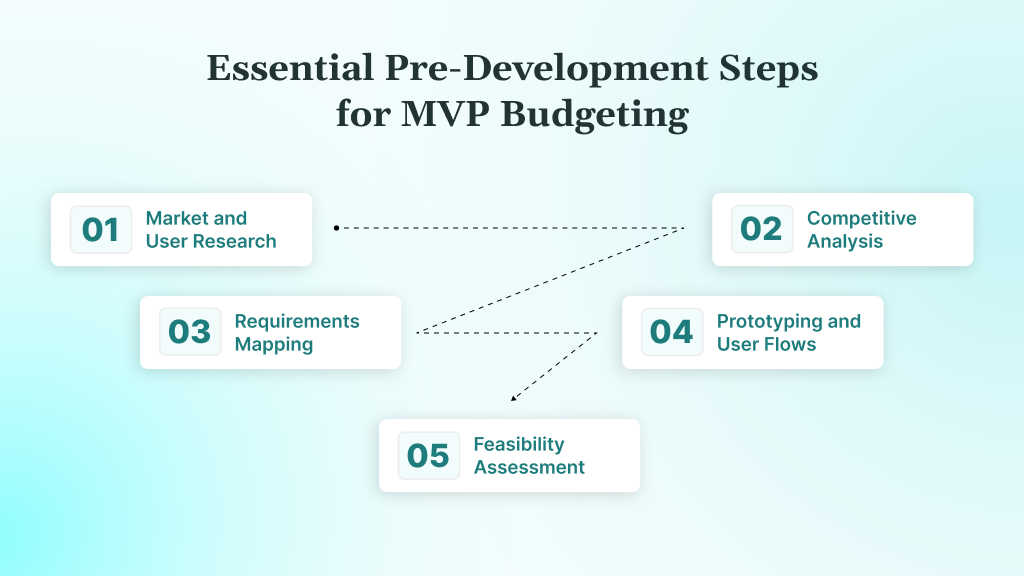
Before you write a single line of code, allocate time and budget to these high-impact pre-development tasks. Each directly shapes your MVP’s success, reduces risk, and streamlines execution for digital products in tech-driven sectors.
1. Market and User Research
Confirm real demand, define your specific problem, and identify the core needs of your target audience. This helps avoid building an MVP no one wants and focuses resources only on validated ideas.
2. Competitive Analysis
Analyze direct and indirect competitors to spot gaps, benchmark feature sets, and identify what is truly unique about your product.
3. Requirements Mapping
Build a clear, prioritized feature list and document must-haves versus nice-to-haves. This clarity prevents costly scope creep during development.
4. Prototyping and User Flows
Develop clickable wireframes or visual prototypes to validate usability, identify gaps, and get stakeholder feedback before investing in code.
5. Technical Feasibility Assessment
Verify that chosen platforms (web, mobile, or both) and stacks fit your requirements and team capabilities without blowing up future budgets or timelines.
Components Contributing to MVP Cost
Let us break down the actual cost centers of a standard MVP build:
| Component | Description | Cost Share (%) |
| UI/UX Design | Layouts, prototypes, and interaction design | 15–25% |
| Frontend Development | What users see and interact with | 20–30% |
| Backend Development | APIs, servers, databases | 25–35% |
| Quality Assurance (QA) | Manual testing and bug fixes | 10–15% |
| DevOps & Cloud Setup | Hosting, deployment pipelines, and monitoring tools | 5–10% |
| Project Management | Planning, roadmap, coordination | 8–12% |
These rates vary with your technology stack, team structure, and deployment method.
Cost Estimation for MVP Development
Fixed vs. Variable Costs
- Fixed: Design, framework setup, auth systems, team coordination
- Variable: Features added after feedback, third-party fees, API usage limits
Estimating Cost Using Prototypes
Simple wireframes reduce ambiguity. By testing with users, you minimize the need for future code or architectural overhauls.
Realistic Ranges (Based on Market)
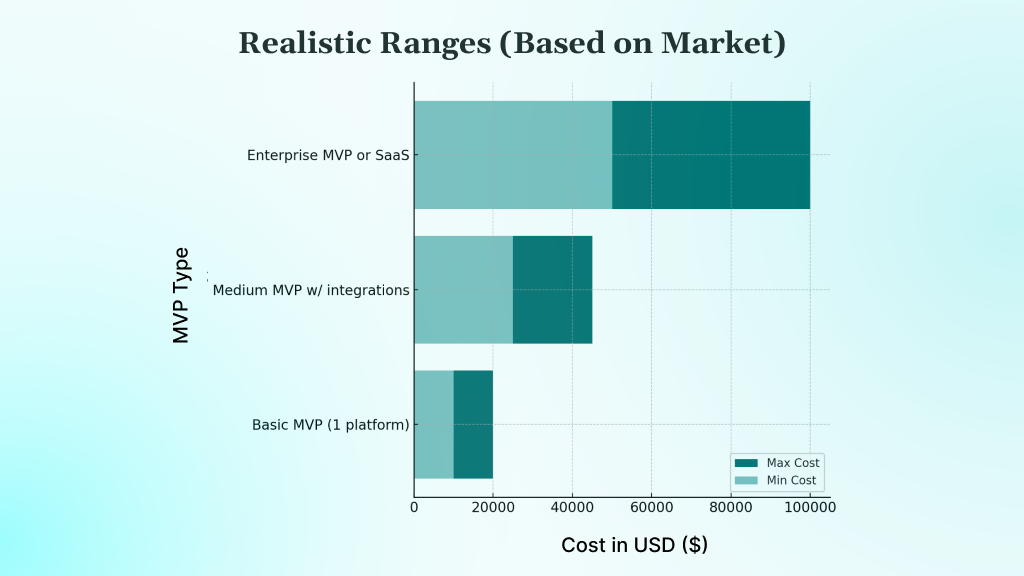
- Basic MVP (1 platform) = $10,000–$20,000
- Medium MVP w/ integrations = $25,000–$45,000
- Enterprise MVP or SaaS = $50,000–$100,000+
Next, where you hire your development team significantly affects cost.
Region-Based Cost Differences
Hiring developers in different geographies changes the total project cost without changing the product scope.
| Region | Avg. Hourly Rate (USD) | MVP Cost Range |
| USA & Canada | $80 – $150 | $60,000+ |
| Western Europe | $55 – $120 | $35,000 – $90,000 |
| Eastern Europe | $30 – $60 | $20,000 – $45,000 |
| India & South Asia | $15 – $40 | $10,000 – $25,000 |
Partnering with trusted offshore vendors like DEVtrust maximizes technical quality while staying lean on cost.
Hiring Options and Their Cost Implications
Freelancers
- Best for: Simple MVPs, small budgets
- Typical Cost: $4,000–$15,000 per MVP
- Pros: Affordable, flexible, vast talent pool
- Cons: Quality and reliability may vary, and limited team coordination
In-House Teams
- Best for: Long-term or IP-sensitive projects
- Typical Cost: $120,000–$180,000/year (whole team)
- Pros: Full control, cultural fit, immediate collaboration
- Cons: Highest cost, hiring/onboarding overhead
Agencies (Outsourcing)
- Best for: Quick launches, mid-to-complex MVPs
- Typical Cost: $30,000–$75,000+ per MVP
- Pros: Comprehensive service, structured process, scalable teams
- Cons: Less direct control, may require strong communication
Hybrid Models
- Best for: Startups wanting internal vision with external tech execution
- Typical Cost: Variable (mix of in-house and agency)
- Pros: Balances control and cost, combines internal leadership with external expertise
- Cons: Needs close coordination between teams
Tips for Reducing MVP Development Costs
Control your costs without compromising on quality or functionality using these tips:
- Define the MVP scope narrowly. Stick to the main features only.
- Use open-source solutions. Tools like Firebase, Django, or PostgreSQL minimize licensing.
- Avoid building from scratch. Use off-the-shelf integrations where possible (e.g., Stripe, Auth0).
- Start with low-fidelity prototypes. Validate the design before coding.
- Set bi-weekly check-ins. Short feedback loops reduce expensive rework.
- Document everything up front. Clear specs avoid scope creep later.
Post-Development Factors
Your MVP launch is not the finish line; it is the start of your market testing phase.
Consider the following recurring or follow-up costs:
- Monthly hosting and DevOps tools
- Performance and error monitoring licenses (e.g., Sentry, Datadog)
- Support hours for bug fixes or improvements
- Security updates & compliance maintenance (HIPAA, GDPR, etc.)
- User analytics stack (e.g., Mixpanel, Hotjar)
These costs typically consume 10–15% of your MVP budget annually.
Realistic Budgeting and Financial Planning
Set yourself up for success with structured budgeting:
- Start with a cost ceiling and work backward, considering the features.
- Create a phased roadmap. Launch basic v1 before adding v2 or v3 features.
- Have a financial buffer. Reserve 15–25% for unexpected additions.
- Request itemized breakdowns from agencies or consultants.
Conclusion
Understanding the MVP development cost is critical for both startups and mid-sized enterprises launching new products. Budgeting early, especially when planning a digital health tracker, edtech platform, or fintech dashboard, consistently leads to better outcomes.
The true cost of an MVP depends on how lean, scalable, and focused your approach is. Prioritizing these factors helps accelerate product-market fit while reducing financial risk.
If you are planning your next MVP or need a detailed quote, DEVtrust offers comprehensive support from planning to deployment. With transparent processes, scalable architecture, and cloud-native technologies, DEVtrust helps you bring your ideas to life with confidence.
How Much Does an MVP Development Cost? Comprehensive Guide
Discover MVP development cost essentials. Assess project complexity, scope, and hiring models. Start budgeting for your MVP today!
Contact Us